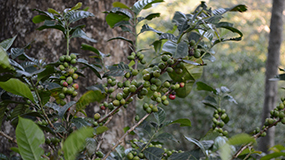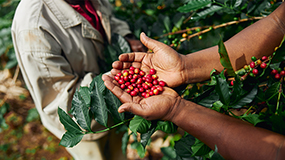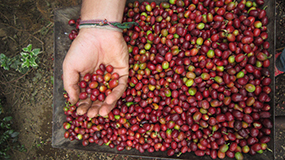Lesson Plan 1
Why might there be a future without coffee, and can we do anything about it?
High school students, as scientists, investigate changes in coffee plant populations in order to answer the following driving question: Why might there be a future without coffee and can we do anything about it? Students figure out that there are a number of environmental changes that have threatened coffee plants. Students will explore more about a disease called Coffee Leaf Rust (CLR) that is becoming more common in coffee plants. Students will learn that some coffee plants are more resistant to rust than others. Students will model their initial ideas about how wild and cultivated coffee populations are changing and why the future of these populations looks bleak. Students will create a list of ideas about what we would need to know about coffee plants in order to protect them in the future.
Time: One 50-minute class period











